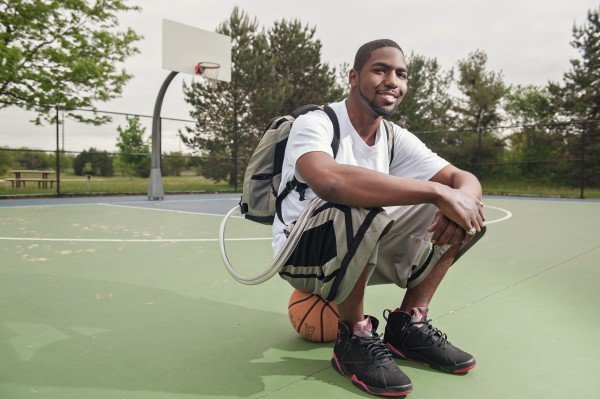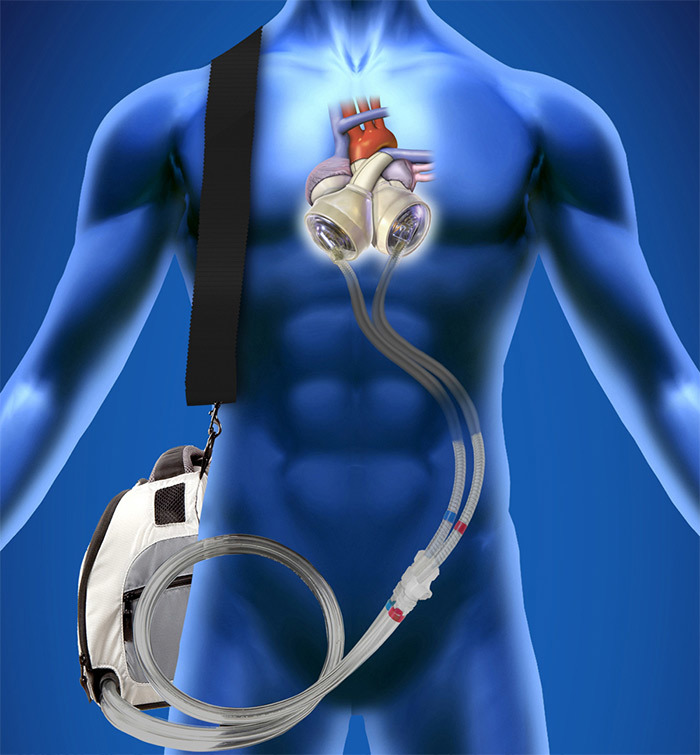The 25-year-old has spent more than a year with an artificial heart in his backpack
The artificial heart of SynCardia with a portable battery pack has already tested hundreds of patients.

It is very difficult to get an organ for transplantation. Even the president, if necessary, will have to wait for the donor in the queue (among patients with priority No. 1), what can we say about ordinary citizens. To date, more than 121,000 patients are on the American waiting list . On average, 22 people die every day, without waiting for the organ to be transplanted.
Fortunately, science does not stand still, so that the death rate of patients can be reduced now. In the USA, a new technology was put into operation that can significantly extend the waiting time for people without a heart.
Innovative technology has already been tested in action. For example, the American patient Stan Larkin (Stan Larkin), who is now 25 years old, lived without his own heart for 17 months, and now he nevertheless waited for a queue for transplantation .
Stan Larkin and his older brother were diagnosed with hereditary cardiomyopathy.some years ago. Cardiomyopathy is a disease of the myocardium in which the heart muscle is structurally and functionally altered in the absence of coronary artery disease, arterial hypertension and valvular lesions. Hereditary hypertrophic cardiomyopathy results from mutations in one of four genes encoding heart proteins: heavy chain beta-myosin (a gene on chromosome 14); heart troponin T (in chromosome 1); alpha-tropomyosin (in chromosome 15) or myosin-binding protein C (in chromosome 11).
With cardiomyopathy, heart failure slowly but inevitably progresses, so patient survival is low. The only hope is a heart transplant.
In December 2014, Stan's heart still refused, and the doctors decided to remove him, so the guy becameThe first patient in Michigan who installed the SynCardia Freedom Portable Driver is a six-kilogram portable device that pumps blood through the arteries using pumps and compressed air, replacing the real heart. Since 2010, tests of this device have been quite successful; in 2012, the artificial heart of the SynCardia Freedom Portable Driver won the Medical Design Excellence Award at the medical technology competition in the resuscitation and emergency medical care category.

The device with a portable battery is intended for use in case of complete failure of the heart muscle. SynCardia Freedom Portable Driver has become the first device of its kind in the world: a fully portable artificial heart that can be carried freely with you in a backpack. Other portable devices, such as implantable defibrillators, help only with partial failure of the heart, and the SynCardia device completely replaces the natural organ. Before his invention, the artificial heart was a stationary unit, so the patient was bedridden.

Stan Larkin lived with an artificial heart for 555 days. The absolute record for a patient with a fully artificial heart. SynCardia Total Artificial Heart is 1374 days.. About a third spend with such a device more than a year, and some - for two years or more. Among foreign patients for more than two years, 47% use an artificial heart, in the United States - 21% (probably, in the USA the line for transplantation moves faster).
The artificial heart of SynCardia Heart weighs 160 grams (twice lighter than natural) and costs $ 124,800, plus the maintenance of a portable kit in a backpack.
Brother Larkin was also given an artificial heart in 2015, and a suitable donor was found in just a few weeks. But Stan had to walk with a backpack for almost a year and a half. The autonomy of the device is significantly limited: you have to constantly visit the hospital, and in everyday life, not all activity is allowed. It was forbidden for the patient to overload the cardiovascular system: for example,it was impossible to take your daughters in your arms . But to the surprise of the doctors, Stan was able to play basketball.
“They were both very seriously ill when we first visited them in the intensive care unit,” said Jonathan Haft, an assistant professor of cardiac surgery at the University of Michigan, who performed the surgery on both brothers. - We wanted to implant new organs on them, but we understood that we had little time. They had certain unique anatomical features that complicated the procedure. ”
In the end, on May 9, 2016, Stan Larkin still had a transplant operation and got a real living heart.
The sound of an artificial heart
Who knows, maybe in the future an artificial heart will become even more autonomous and more reliable than the present. Cardiovascular diseases are the leading cause of death in the world, according to WHO statistics , so installing an artificial heart could save millions of lives.
